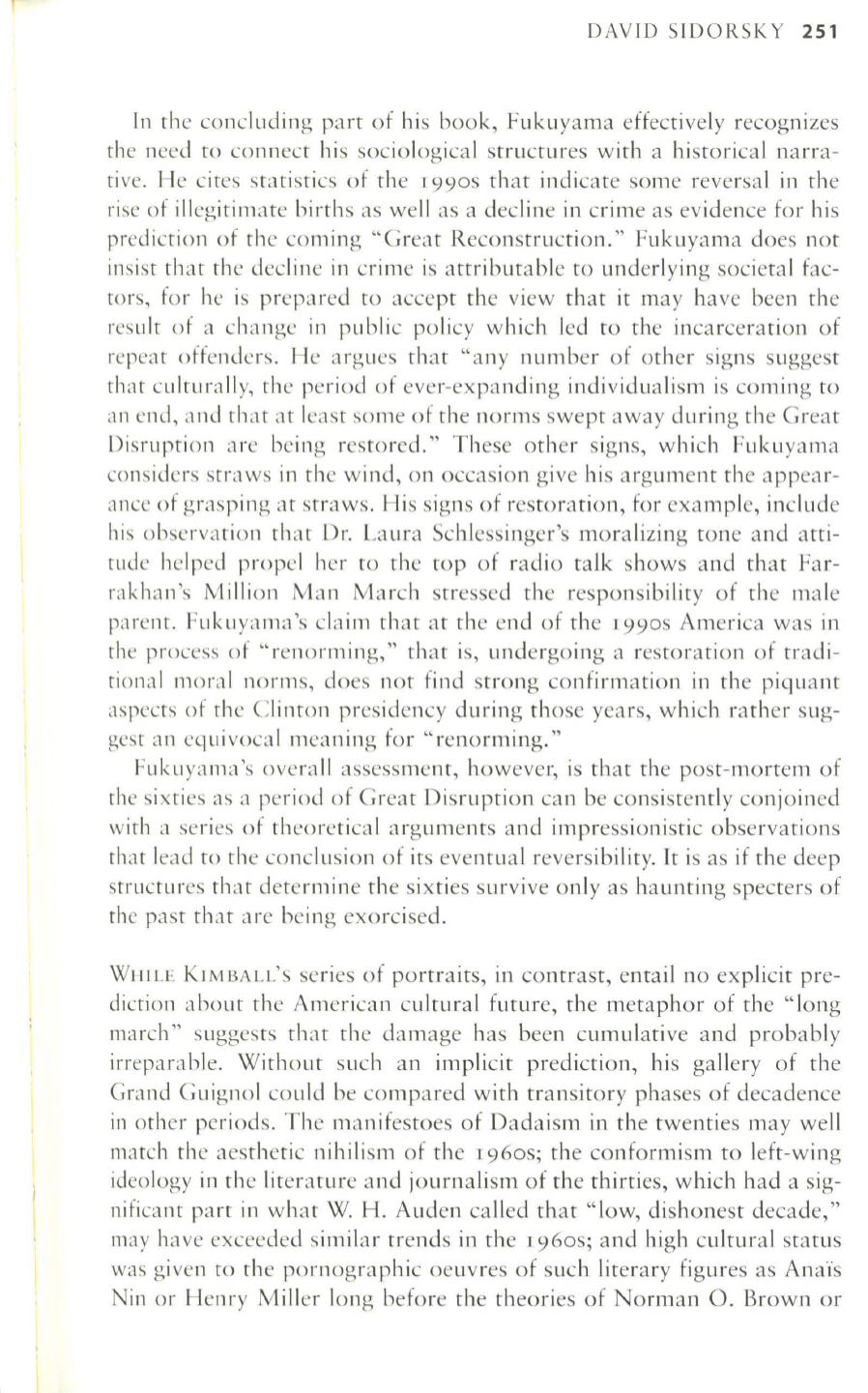
DAVID SIDORSKY
251
In
the concluding part of his book, Fukuyama effectively recognizes
the need to connect his sociological structures with a historical narra–
tive. He cites statistics of the 1990S that indicate some reversal in the
rise of illegitimate births as well as a decline in crime as evidence for his
prediction of the coming "Great Reconstruction." Fukuyama does not
insist that the decline in crime is attributable to underlying societal fac–
tors, for he is prepared to accept the view that it may have been the
result of a change in public policy which led to the incarceration of
repeat offenders. He argues that "any number of other signs suggest
that culturally, the period of ever-expanding individualism is coming to
an end, and that at least some of the norms swept away during the Great
Disruption are being restored." These other signs, which Fukuyama
considers straws in the wind, on occasion give his argument the appear–
ance of grasping at straws. His signs of restoration, for example, include
his observation that Dr. Laura Schlessinger'S moralizing tone and atti–
tude helped propel her to the top of radio talk shows and that Far–
rakhan's Million Man March stressed the responsibility of the male
parent. rukuyama's claim that at the end of the 1990S America was in
the process of "renorming," that is, undergoing a restoration of tradi–
tional moral norms, does not find strong confirmation in the piquant
aspects of the Clinton presidency during those years, which rather sug–
gest an equivocal meaning for "renorming."
rukuyama's overall assessment, however, is that the post-mortem of
the sixties as a period of Great Disruption can be consistently conjoined
with a series of theoretical arguments and impressionistic observations
that lead to the conclusion of its eventual reversibility.
It
is as if the deep
structures that determine the sixties survive only as haunting specters of
the past that arc being exorcised.
WIIILE KIMBALL'S
series of portraits, in contrast, entail no explicit pre–
diction about the American cultural future, the metaphor of the "long
march" suggests that the damage has been cumulative and probably
irreparable. Without such an implicit prediction, his gallery of the
Grand Guignol could be compared with transitory phases of decadence
in other periods. The manifestoes of Dadaism in the twenties may well
match the aesthetic nihilism of the 1960s; the conformism to left-wing
ideology in the literature and journalism of the thirties, which had a sig–
nificant part in what W.
H.
Auden called that "low, dishonest decade,"
may have exceeded similar trends in the 1960s; and high cultural status
was given to the pornographic oeuvres of such literary figures as Ana·ls
Nin or Henry Miller long before the theories of Norman O. Brown or


